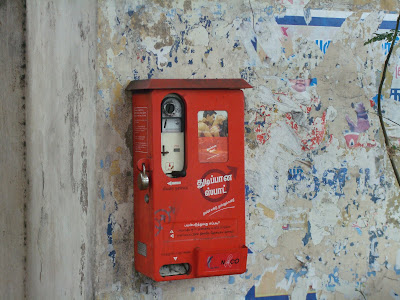St Mary's Church, inside Fort St George, is packed with memorials to British officers long gone. In almost all cases, the inscriptions on their memorials are lengthy enough to provide several clues to the officer's career and accomplishments. One of the few exceptions to this rule is this statue on whose pedestal it just says, "Conway - Adjutant General - Obiit 13th May 1837 / Erected by the Army and by the Public". That's most probably because there was quite simply too much to say about Thomas Henry Somerset Conway, who had served in India, "having never quitted the country", for the entire duration of his 44 years' service with the army.
It is also likely that he spent a vast majority of those years in Madras. A story tells of him, then a young Ensign beginning his career, looking out through a window of the Exchange House in Fort St George when he was tricked into believing that the House was on fire. Upon which Conway jumped out of the window and broke his leg, no doubt providing a lot of merriment to his brother Ensigns. From those early days in Madras, he went on to become the Adjutant General of Madras, a position he held for 28 years, under eight Commanders-in-Chief. During his service he covered almost every military campaign in south India, apart from seeing action in the Mahrattah War and serving on the Military Finance Committee at Calcutta. Unlucky with promotions, he remained a rung lower than his contemporaries, a circumstance that some attributed to his unrelenting discipline and rigid integrity (it is said that he died without leaving behind a shilling - for a British officer in early 19th century Madras, that's saying something!). Those qualities also gave him an unmatched understanding of "every thing relating to the dress, drill, appearance and discipline of an army".
Technically, he was the Brigadier at Hyderabad when he died. However, he hadn't yet formally assumed that post, for he died of cholera at Guntoor, en route to taking charge at Hyderabad; which is why this statue (by Turnouth) credits him as Adjutant General. Though he was absolutely strict as a disciplinarian, unwilling to distingush the human from the organization, he was held in high regard by the men who were under his command - and that's why, in small letters, right on top of the pedestal, it says "The Soldiers' Friend"!




















